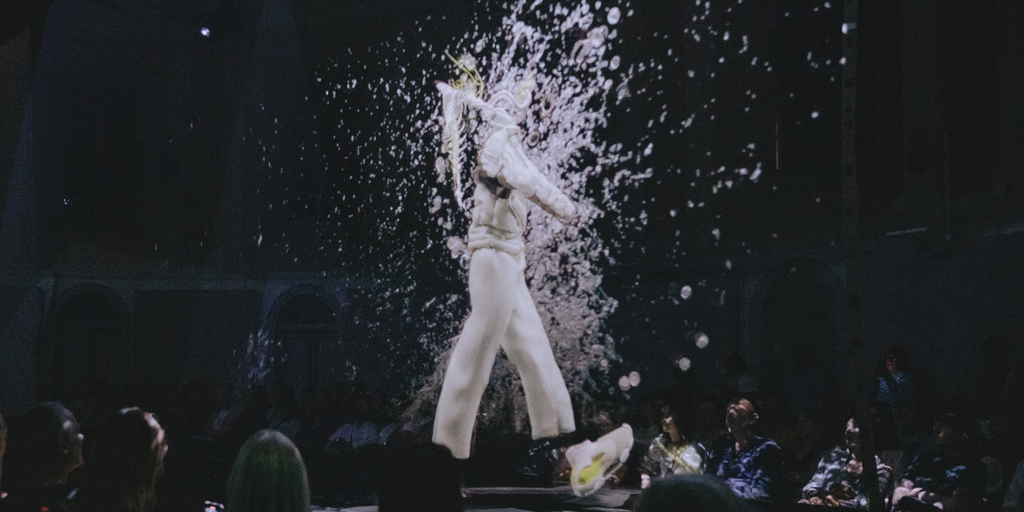An avatar presents digital fashion designs at Felix Meritis in Amsterdam. Courtesy: Future Front Row
Audience members view the Future Front Row performance in Amsterdam. Courtesy: Future Front Row
Today has been a remarkable day for digital fashion! Hologram fashion show in Amsterdam during Fashion Week featuring incredible artists
Ningaloo’s performance from @mutani_io just stole my heart forever! pic.twitter.com/lUZjU6SkcQ
— Svetlana Yakunina (@svetlanayakuni_) September 2, 2023
DRESSX starts September’s Fashion Weeks season with FUTURE FRONT ROW holographic runway in Amsterdam
The 1st fully digitalise runway that was put on @fashionweeknl Calendar at @FelixMeritis 
It is our privilege to bring 4 talented DRESSX designers curated by our Head of… pic.twitter.com/mCSmwbaglq
— DRESSX (@dressxcom) September 6, 2023
Courtesy: Future Front Row
A six-foot holographic avatar walks down the runway at Future Front Row’s debut event at Amsterdam Fashion Week. Courtesy: Future Front Row
Stay on top of crypto news, get daily updates in your inbox.
Source: https://decrypt.co/155851/hologram-runway-wows-crowds-at-amsterdam-fashion-week







